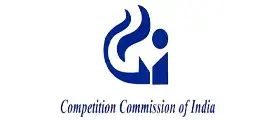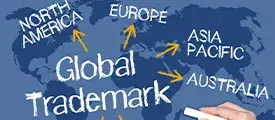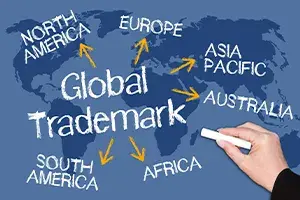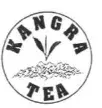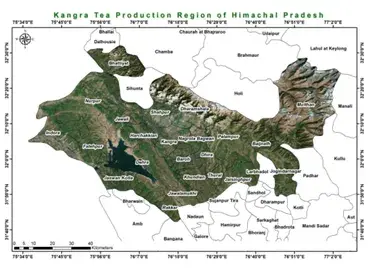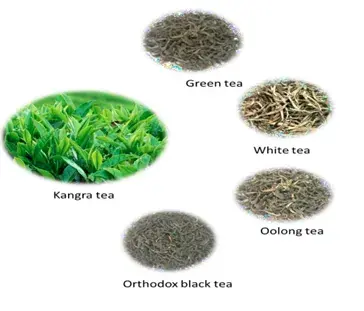Cabinet approves National Research Foundation Bill, 2023

The Union Cabinet on June 28, 2023, approved the National Research Foundation (NRF) Bill, 2023 in the Parliament[1].
Establishment of National Research Foundation
The Bill seeks to establish NRF, with the object to enhance and promote the culture of research and innovation in India’s universities, colleges, research institutions, and R&D laboratories.
The NRF is expected to provide a high-level strategic direction of scientific research in the country as per recommendations of the National Education Policy (NEP), at a total estimated cost of Rs. 50,000 crore during five years (2023-28).
One of the primary functions of NRF, includes advanced collaborations among the industry, academia, and government departments and research institutions with the aim to create an interface mechanism, with science as the pivotal, for participation and contribution of industries and State governments in addition to the scientific and line ministries.
DST to be the administrative department of NRF
The Department of Science and Technology (DST) will be the administrative Department of NRF which will be governed by a Governing Board consisting of eminent researchers and professionals across disciplines he Prime Minister will be the ex-officio President of the Board and the Union Minister of Science & Technology & Union Minister of Education will be the ex-officio Vice-Presidents.
NRF’s functioning will be governed by an Executive Council chaired by the Principal Scientific Adviser to the Government of India.
The Bill will repeal the Science and engineering Research board (SERB) established by an act of parliament in 2008 and subsume it into NRF.
The NRF will correct the problem of unequitable research funding and will bring in private sector investment to research infrastructure and building trained manpower.
Scientific research is the hallmark of any nation’s growth and instills scientific temper in the minds of the people. According to the IBEF(India Brand Equity Foundation), India has a large network of science and technology institutions and trained manpower. It has the third-largest scientific and technical manpower in the world.
With large network of science and technology institutions, India is the third largest scientific and technical manpower in the world and ranks top in the field of basic research[2]. From making powerful weather forecasting supercomputers- Pratyush and Mihir- to entering in the ranks of top countries with research prowess, India portrays huge potential for research outlook amongst its population.
The establishment of NRF is the need-of-the hour, as inspite of having immense potential, such innovations and research remain untapped and marred due to lack of funding. It is expected that the NRF will strengthen funding and streamline the culture of research and innovation in India’s universities, colleges, research institutions, and R&D laboratories.
[1] https://pib.gov.in/PressReleaseIframePage.aspx?PRID=1935895
[2] https://dst.gov.in/sites/default/files/R%26D%20Statistics%20at%20a%20Glance%202019-20.pdf
Related posts
Innovation and adoption will lead India’s Electric Vehicle #EV Evolution
International Recognition of Himachal’s Kangra Tea

By Nitika Sinha and Hashmeeta Sehgal
Himachal Pradesh’s unique Kangra Tea has recently been granted Geographical Indication (GI) registration in European Union, which is considered to be a significant milestone for the tea industry in India. This registration will pave the way for commercialization of Kangra Tea in European countries, which will help to increase its popularity and demand relating back to the British era when Kangra Tea acquired recognition for its unique qualities. In India, Kangra Tea was awarded the GI designation in the year 2005 by the Registrar of Geographical Indicators, Chennai.
Kangra Tea is a unique variety of tea derived from the leaves, buds and tender stems of the Camellia sinensis species as cultivated grown in the Kangra district of Himachal Pradesh, India. The Kangra Valley is renowned for its produce premium quality teas (green, orthodox black, white and oolong) with their unique bouquet and a sweet lingering after taste.
Kangra Tea is known for its health benefits as it is rich in antioxidants and is observed to have anti-inflammatory properties. It is also believed to contribute in reducing stress and improving mental alertness.
Kangra Tea was exported to European markets during the British era in the year 1849[1]. After, Dr. Jameson (superintendent of the Botanical Tea Gardens) declared the region quite suitable for tea cultivation and later started its first commercial production in 1852, it received various awards from markets in Amsterdam and London from the year 1886 to 1895. [2]
The GI registration of Kangra Tea with the European Union will enable the sale of the tea in European countries under its own name which will subsequently help to protect the authenticity and quality of Kangra Tea and prevent its use by third parties whose products do not originate from the same geographical area i.e., Kangra region or do not conform to the certified standards of production[3]. It will also help to promote sustainable agriculture practices in the region by encouraging farmers to grow high-quality tea. This will help Kangra Tea to reach a broader audience and increase its demand in international markets similar to Darjeeling Tea which also obtained GI registration in European Union in the year 2011.
Picture showing different types of tea (green, white, oolong and orthodox black) prepared from ‘Kangra tea’ leaves.
[1]Kangra tea leaves for European markets (tribuneindia.com)
https://www.tribuneindia.com/news/himachal/kangra-tea-leaves-for-european-markets-509062 accessed July 03, 2023
[2] Kangra tea second product to get European GI tag: CM (thestatesman.com) https://www.thestatesman.com/india/kangra-tea-second-product-to-get-european-gi-tag-cm-1503182606.html accessed July 03, 2023
[3] Protecting local products with Geographical Indications (wipo.int) https://www.wipo.int/ip-outreach/en/ipday/2022/toptips/geo_indications.html#:~:text=As%20IP%20rights%2C%20GIs%20provide,the%20certified%20standards%20of%20production accessed June 8, 2023.
Related Posts
Geographical Indication Registry Showers GI Certifications
Geographical Indications of Goods (Registration and Protection) (Amendment) Rules, 2020- notified
Impact of Deal Value Threshold on Tech Industry- Competition Law
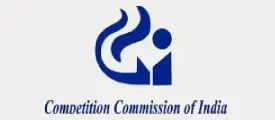
By Rupin Chopra and Apalka Bareja
In today’s day and age, mergers and acquisitions are considered to be the key drivers of growth and innovation. With an increase in such transactions and changing times, the Competition Law Review Committee (CLRC) prepared a report of its observations and recommendations deliberating and elucidating the need to introduce a new threshold in order to be able to adapt to the evolving and dynamic digital market considering deals in the digital industry are expensive not only in terms of monetary value but because such deals also bring with them a wealth of knowledge, expertise, and resources. With the intent to address combinations that have an appreciable adverse effect on competition, even if they fall within the de minimis exemption The Competition (Amendment) Bill 2023 received the President’s assent on April 11, 2023, to become The Competition (Amendment) Act, 2023 (“Amendment”).
Competition Law- India
The provisions of the Competition Law govern the combinations/amalgamations/mergers of entities which can hamper competition and create an appreciable adverse effect in the relevant sector. These transactions were subject to certain thresholds under The Competition Act of 2002. If the transactions were above the prescribed threshold then the parties involved in such transactions had to take approval from the Competition Commission of India (CCI) by giving a notice. If the notice was not given then parties were subjected to the penalties under the law.
Before the Amendment, the Act provided ‘De Minimis Exemption’, where a transaction was exempted from the notification requirement under the law if the targeted company had assets less than INR 350 crore or a turnover of less than 1000 crore.
The Amendment introduces a new standalone threshold called Deal Value Threshold (DVT). DVT is based on the size of the transaction or the amount the entity (acquirer) is willing to pay as a consideration in a transaction. The deals crossing 2000 Crores will require the entities (party to the transaction) to inform CCI. Additionally, this Amendment will cover international enterprises that have “Substantial Business Operations in India” (SBOI). The rules and regulations for the qualifications for an SBOI awaits clarification and shall be informed soon.
History of DVT
In 2018, the Ministry of Corporate Affairs (MCA) constituted CLRC to “recommend a robust competition regime by taking the inputs of key stakeholders, and suggest changes in both the substantive and procedural aspects of the law“. The committee then submitted the report where they discussed the need for the introduction of a new threshold for CCI to have the power to scrutinize deals that have a substantial impact on the market. The present Amendment derives it source from the report presented by the committee.
Observations by CLRC with respect to New Threshold
The Committee in its report observed that the thresholds based on assets and turnovers were not accurate for indicating the transaction’s effect on the competition in the market.[1] They reported:
- Acquisitions in tech/digital markets derived value from data or some business innovation held by the target.
- In such acquisitions, the target did not have a huge asset base and may be offering products/services that are either free or generate insignificant turnover.
- This is because the business model of companies in tech/digital markets is often such that they do not generate any significant revenue for a number of years, focusing initially on user growth. In such instances, the value of the target’s sales is a rather poor indicator of the transaction’s significance for competition.
- Thus, a need for a threshold based on the deal value was the need of the hour[2].
Trigger Event
The recent Amendment can see its origin from the WhatsApp/Facebook merger of 2014 when Facebook acquired WhatsApp for USD 19 billion. WhatsApp’s turnover was less than the asset/turnover thresholds under the Indian Competition Law. During the time of the merger, the thresholds were INR 750 Crores in assets or INR 2250 crores in turnover[3]. It was WhatsApp/Facebook merger which created apprehension and raised a question in the mind of the regulators if the law was doing enough to prevent acquisitions of ‘nascent competition’ and ‘killer acquisitions[4]’.The merger triggered the following concerns all around the world even though it did not match the threshold:
- Reduced Competition for Facebook: WhatsApp and Facebook both were rivals in the instant messaging market. The merger led to a reduction in competition and overall increase in Facebook’s influence in the market.
- User Base concerns: Both Facebook and WhatsApp had large user base. There were some concerns regarding consumer’s interest.
- Higher barrier for new players: The merger not only strengthened the position of Facebook which is Meta now but it also increased the entry barrier for new players. The competition hardly survived after the merger and many other player were wiped out.
This trend was further seen in other acquisitions in Microsoft/LinkedIn, Myntra/Flipkart, Ola/TaxiforSure, and Snapdeal/Freecharge. The report pointed out that these transactions slipped through the cracks of the CCI’s review even though they had a significant impact on competition[5].
Impact on Tech-Industry
The value of assets and turnover is not an indicator of impact with respect to tech industry. Therefore, the price or the value which the acquirer is willing to pay is the right indicator of the transaction. Now, DVT will bring those deals under the purview of CCI which is based on the value of the deal which the acquirer is willing to pay. As a consequence of this, the Tech Industry will have a tough time consolidating market positions, eliminating potential threats, or expanding into new lines of business. Overall, it will allow room for more competition and protect acquisition of new players by Tech Giants.
DVT in other Jurisdictions
Many countries have felt the need to bring digital markets under the scrutiny of their Antitrust Laws. Austria and Germany also have DVT in their competition law regime. The threshold in these jurisdiction are as follows:
- Germany: In Germany, the Deal Value Threshold is triggered when the transaction value exceeds EUR 400 million. Additionally, if the combination of the aggregate exceeds EUR 500 million worldwide and EUR 25 million in Germany.
- Austria: In Austria, the Deal Value Threshold is triggered when the transaction value exceeds EUR 200 million. Additionally, if the combined aggregate turnover exceeds EUR 300 million worldwide and EUR 15 million in Austria.
Conclusion
The eruption of internet markets has gained speed all over the world. The benefits of the growth is noteworthy but to expatiate innovation, competition is a must. There is a consensus all over the world that digital companies’ show anti-competitive behavior and the antitrust regime should be strong enough to tackle them. The introduction of DVT in India is consistent with the practices around the world and will help in curbing anti-competitive behavior.
The goal of adding a new threshold is to provide the regulator more power to stop anti-competitive behavior. There is also a need to clearly define what constitutes the value of a transaction because the “deal value” of any M&A transaction is likely to surpass the value of consideration. As a result, it is important for the CCI to provide a list of the elements, variables, and parts that would make up “value of transaction” – in particular, non-monetary consideration. If the Committee’s suggestions are adopted, it will be up to the CCI to swiftly define these words so that the DVT can continue to contribute significantly to regulatory certainty and sustain India’s business-friendly environment.
Piyush Kumar Singh,Assessment Intern at S.S. Rana & Co. has assisted in the research of this Article.
[1] https://cbcl.nliu.ac.in/guest-posts/deal-value-threshold-for-combinations/
[2] https://www.ies.gov.in/pdfs/Report-Competition-CLRC.pdf
[3] https://cbcl.nliu.ac.in/guest-posts/deal-value-threshold-for-combinations/
[4] https://www.nlsblr.com/merger-threshold-and-merger-thresholds-in-the-digital-economy
[5] https://www.ies.gov.in/pdfs/Report-Competition-CLRC.pdf
Related Posts
EU on Google’s dominance in Advertising Business

By Rupin Chopra and Apalka Bareja
Introduction
Google’s dominant position in the online advertising industry has drawn the attention of antitrust regulators in Europe. With a 34% share of the $118 billion European Union (for brevity “EU”) digital ad market, Google’s influence extends across various layers of the advertising ecosystem. Critics argue that the company’s packaging and pricing strategies stifle competition, enabling it to command an unfairly large portion of online ad transactions. In light of this, the EU antitrust regulator, the European Commission, on June 14, 2023 ordered the breakup of Google’s Ad Business, raising concerns about the company’s market power and pricing practices.
In order to contextualise European Commissions’ findings better, below is a brief overview on how Google has established itself as a force to be reckoned with in the digital ad space.
Google is an advertising company, not a technology company
Google’s dominance in the advertising market is a result of its strategic positioning and the extensive data it collects from its various services. Advertising plays a critical role in supporting publishers and delivering content to users, making it a lucrative industry. Google’s reach extends across multiple advertising formats, including text ads and display ads, including video, which appear in search results, websites, social media feeds, and videos.
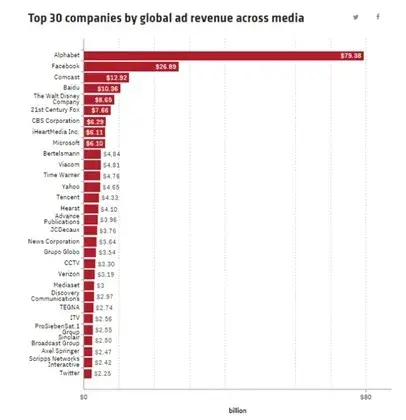

Google’s advertising business is driven by three monopolies: what users want(Google Search), where they have been(Doubleclick digital advertising)[3], and where they are (Android OS). Through Google Search, the company gathers specific contextual data on users’ search queries and clicked search results, providing insights into their purchase intentions and potential buying locations.
The DoubleClick cookies employed by Google generate data on the websites users visit, encompassing over 2 million web pages. As the world increasingly shifts to mobile devices, Google’s dominance of the Android mobile platform further strengthens its advertising reach. Android, being the largest operating system for smartphones, enables Google to reach users across devices, apps, and sites, providing a comprehensive view of their activities.
One of the most valuable types of data for advertising is location data. Similar to search data, location data allows for personalized advertising at an individual level. Google continuously collects vast amounts of location data on its users through tracking enabled location services, as well as through more covert means such as WiFi mapping, Bluetooth beacons, and cell tower communications.
Moreover, Google’s dominance extends beyond advertising to web browsers, where Chrome holds a significant market share. This further enhances Google’s ability to collect data on users’ browsing habits, contributing to its data-driven advertising ecosystem.
In summary, Google’s advertising dominance stems from its ability to collect data at an unprecedented scale. The company’s vast array of services, such as Google Search, Android, YouTube, and Chrome, generate copious amounts of user data. By leveraging this data, Google can deliver targeted ads that maximize the chances of conversions. However, this extensive control over data and advertising raises concerns about anti-competitive behaviour, as Google’s market power and data-driven practices give it an unfair advantage over competitors in the advertising industry.
The European Commission’s Decision
The European Commission’s decision of ordering the breakup of Google’s ad business stems as a response to concerns over Google’s anti-competitive and monopolistic position in the digital advertisement market. This move marks a significant escalation in the EU’s crackdown on Big Tech companies, as it goes beyond imposing fines and delves into structural changes within the industry. The preliminary findings of the European Commission’s investigation, which was initiated in June 2021, indicate that Google violated the bloc’s competition rules[4] by favouring its own online display advertising technology services over rival publishers, advertisers, and advertising technology services.
The European Commission accuses Google of leveraging its dominant position as the region’s most dominant provider of ad-buying and ad-serving tools to throttle competition. Specifically, since at least 2014[5] , Google has been accused of favouring its ad exchange, AdX, over competitors during the automated ad bidding process. This practice has allowed AdX to charge higher fees from buyers, stifling competition and distorting the digital advertising market. The investigation also scrutinized Google’s conduct regarding YouTube, assessing whether the company exploited the video-sharing platform’s dominant position to prioritize its ad-buying services and impose restrictions on rivals.

Margrethe Vestager[9] , Vice President of the European Commission, emphasized that Google holds a dominant position on both sides of the ad-selling market, abusing its power to favor its own ad exchange and setting rules that reinforce its ability to charge high fees. Vestager highlighted the inherent and pervasive conflicts of interest arising from Google’s simultaneous representation of buyers and sellers in the advertising ecosystem. To address these concerns, Vestager suggested that divesting parts of Google’s services, such as its real-time marketplace for buying and selling ads or tools for publishers to manage their ads, could put an end to these conflicts of interest.
Conclusion
In conclusion, the European Commission’s decision to order the breakup of Google’s ad business reflects the growing concerns over the tech giant’s dominance and anti-competitive behavior in the digital advertising market. The investigation revealed that Google favored its own ad technology services, imposing restrictions on rival publishers, advertisers, and ad-tech providers. By leveraging its position as the leading provider of ad-buying and ad-serving tools, Google was able to manipulate the market and charge higher fees, stifling competition and distorting fair practices.
This move by the European Union marks a significant escalation in its efforts to rein in Big Tech companies, going beyond monetary fines and demanding structural changes to address competition concerns. It sets a precedent for other regulators around the world to take similar action and foster a more level playing field in the digital advertising industry.
The European Commission’s findings resonate with ongoing discussions in the United States regarding legislation aimed at restricting the power of companies with significant control over the digital ad ecosystem. With Google’s vast control over various aspects of programmatic advertising, including the demand side platform, supply side platform, and ad exchange, there are growing concerns about monopolistic practices and the need for greater transparency and competition.
Google now has the opportunity to defend itself before the final decision is issued, but the initial findings clearly highlight the inherent conflicts of interest and abuse of dominant position by the tech giant. If confirmed, those conducts would infringe Article 102 of the Treaty on the Functioning of the European Union that prohibits the abuse of a dominant market position. The European Commission’s suggestion of divesting certain parts of Google’s services aims to address these conflicts and restore fair competition in the market.
Shantam Sharma, Associate at S.S. Rana & Co. has assisted in the research of this article.
[1] Available at: https://www.theguardian.com/technology/2012/apr/23/doubleclick-tracking-trackers-cookies-web-monitoring
[2] Available at: https://www.legislation.gov.uk/eut/teec/article/102#:~:text=Article%20102(ex%20Article%2082,affect%20trade%20between%20Member%20States
[3] Available at: https://ec.europa.eu/commission/presscorner/detail/en/ip_23_3207
[4] Available at: https://ec.europa.eu/commission/presscorner/detail/en/ip_23_3207
[5] Available at: https://www.congress.gov/bill/117th-congress/senate-bill/4258/text?__cf_chl_rt_tk=ybe.foxWQYXL.d9kCSdI2YgGWb5tHKYGHf4XJkYB22o-1688965845-0-gaNycGzNCuU
[6] Available at: https://www.statista.com/outlook/dmo/digital-advertising/worldwide
[7] Available at: https://www.nytimes.com/2023/01/24/technology/google-ads-lawsuit.html#:~:text=The%20lawsuit%20said%20Google%20had,brokers%20to%20facilitate%20digital%20advertising.%E2%80%9D
[8] Available at: https://ec.europa.eu/commission/presscorner/detail/en/ip_23_3207
[9] Available at: https://www.legislation.gov.uk/eut/teec/article/102#:~:text=Article%20102(ex%20Article%2082,affect%20trade%20between%20Member%20States
Reduction in amount of Individual Fee while designating Malaysia
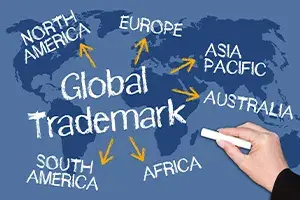
By Abhishek Chandok and Vibhukant Chauhan
The Madrid Protocol is a convenient and cost effective system that offers owners of the trademark the possibility to have their trademark protected in several countries (up to 130 countries*) by filing only one application and submitting a single set of fees. The System allows central management of trademark registrations with effects in various countries by providing a user friendly, expeditious and cost-effective set of procedures for the central filing of trademark application.
The Director General of World Intellectual Property Organization (WIPO) in accordance with rule 35(2) (d) of the Regulations under the Madrid Protocol has established new amounts, in Swiss francs, of the individual fee that is payable when the Malaysia is designated in an international application, in a designation subsequent to an international registration and in respect of the renewal of an international registration in which the Malaysia has been designated.
As of July 26, 2023, the amounts of the individual fee payable in respect of Malaysia is mentioned below:
| Items | Amount(in Swiss francs i.e. CHF) | ||
| Until July 25, 2023 | To be applicable as from July 26, 2023 | ||
| Application or Subsequent Designation | – for each class of goods or services | 259 | 221 |
| Renewal | – for each class of goods or services | 236 | 201 |
The new amount will be payable in the following scenarios:
1- In case Malaysia is designated in an international application which is received by the Office of origin on or after July 26, 2023
2- If the subject of a subsequent designation which is received by the Office of the Contracting Party of the holder on or after July 26, 2023, or is filed directly with the International bureau of WIPO on or after that date; or
3- If it has been designated in an international registration which is renewed on or after July 26, 2023.
The Official notice issued by WIPO can be accessed by clicking
https://www.wipo.int/edocs/madrdocs/en/2023/madrid_2023_18.pdf?utm_source=WIPO+Newsletters&utm_campaign=3a105fab67-DIS_MADRID_NEWS_EN_280623&utm_medium=email&utm_term=0_-0c57c891bc-%5BLIST_EMAIL_ID%5D
Related Posts
Reduction in amount of Individual Fee while designating Republic of Korea
Reduction in amount of Individual Fee while designating Pakista
Reduction in amount of Individual Fee while designating Republic of Korea

By Abhishek Chandok and Vibhukant Chauhan
The Madrid Protocol is a convenient and cost-effective system that offers owners of the trademark the possibility to have their trademark protected in several countries (up to 130 countries*) by filing only one application and submitting a single set of fees. The System allows central management of trademark registrations with effects in various countries by providing a user friendly, expeditious and cost-effective set of procedures for the central filing of trademark application.
The Director General of World Intellectual Property Organization (WIPO) in accordance with rule 35(2) (d) of the Regulations under the Madrid Protocol has established new amounts, in Swiss francs, of the individual fee that is payable when the Republic of Korea is designated in an international application, in a designation subsequent to an international registration and in respect of the renewal of an international registration in which the Republic of Korea has been designated.
As from July 26, 2023, the amounts of the individual fee payable in respect of Republic of Korea is mentioned below:
| Items | Amount(in Swiss francs i.e. CHF) | ||
| Until July 25, 2023 | To be applicable as from July 26, 2023 | ||
| Application or Subsequent Designation | – for each class of goods or services | 224 | 191 |
| Renewal | – for each class of goods or services | 256 | 218 |
The new amount will be payable in the following scenarios:
1- In case Republic of Korea is designated in an international application which is received by the Office of origin on or after July 26, 2023
2- If the subject of a subsequent designation which is received by the Office of the Contracting Party of the holder on or after July 26, 2023, or is filed directly with the International bureau of WIPO on or after that date; or
3- If it has been designated in an international registration which is renewed on or after July 26, 2023.
The Official notice issued by WIPO can be accessed by clicking
https://www.wipo.int/edocs/madrdocs/en/2023/madrid_2023_19.pdf?utm_source=WIPO+Newsletters&utm_campaign=3a105fab67-DIS_MADRID_NEWS_EN_280623&utm_medium=email&utm_term=0_-0c57c891bc-%5BLIST_EMAIL_ID%5D




